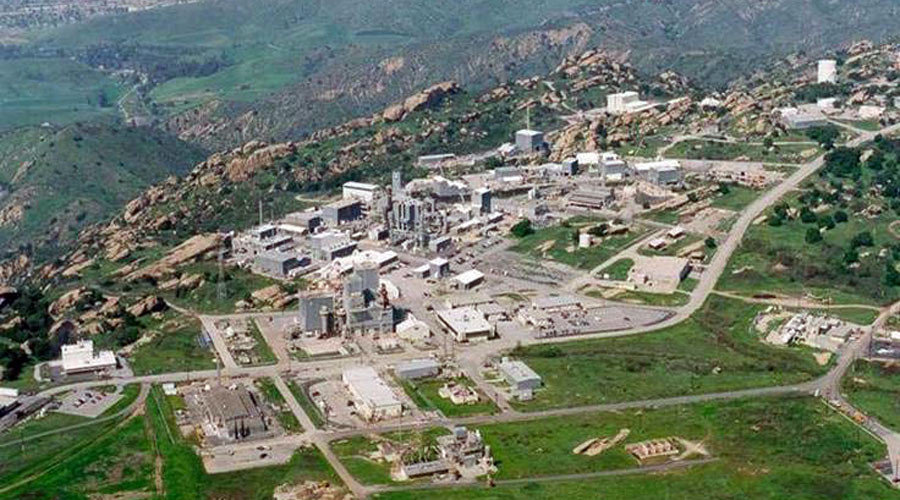
Hundreds of workers at the nuclear and aeronautical facility in Simi Valley, which was instrumental in the US space program from 1949 to 2006, have died or fallen ill due to exposure to radiation.
However, when those people applied for compensation in accordance with a US government program, their claims were denied, McClatchy DC reported.
The Department of Energy (DOE) explained the refusal by saying that the sick employees were unable to prove that they had worked in 'Area IV' at Santa Susana.
Only staff from this section are eligible for compensations as 'Area IV' was the location of nuclear reactor experimentations and development, according to the Department of Labor, which is responsible for making payments.
The workers argue that their"fluid" contracts allowed for them to be regularly dispatched to the radioactive section, but the government failed to maintain records of their movements.
The lawyers believe that laboratory staff should not prove their presence in Area IV at all as DOE contractors used the entirety of the site.
Former Santa Susana employee, William Shepler, who suffers from skin cancer and anxiety problems, was among those, who were denied their pay.
The management of Boeing, which acquired the California facility in 1996, made the decision to leaving sick and dying people without compensation because "they don't know anything," he told RT.
"And I think the DOE, probably, made a decision for Boeing and just told Boeing: 'We know what to do and we'll go along with it'," the nuclear worker stressed.
The authorities"want to keep this small" because of the danger posed by the radioactive site, he explained.
"There are civilians living in Simi Valley and in the canyons near Santa Susana. And even in the [San Fernando] Valley. The evidence is there - there are high rates of rare cancers that are above the norm in the US," Shepler stressed.
The situation would become "unmanageable" for DOE if the truth about the threat posed by the nuclear lab was made public, he added.
Since all reactors were considered experimental, they did not have containment structures, causing radiation leaks. "Santa Susana had no containment vessels. Chernobyl was like Santa Susana, I don't believe it had containment for radiation," the nuclear worker said.
Modern nuclear facilities are "relatively safe... but they were not safe in the 1950s when they were doing this work at Santa Susana," he explained.
Comment: Relatively safe?
World Health Organization: Prolonged exposure to low levels of radiation increases the risk of cancer
Over 300,000 Nuclear Workers from France, the UK and US Studied for Radiation-Cancer Link
A major new study coordinated by World Health Organization's cancer division - the International Agency for Research on Cancer (IARC) - finds that even low-level radiation increases the risk of cancer, if exposure occurs over time.
The IARC announced last week: New results from a study coordinated by the International Agency for Research on Cancer (IARC), the cancer agency of the World Health Organization, show that protracted exposure to low doses of ionizing radiation increases the risk of death from solid cancers. The results, published today in The BMJ [the prestigious British Medical Journal], are based on the most powerful study to date and provide direct evidence about cancer risks after protracted exposures to low-dose ionizing radiation.
"The present study demonstrates a significant association between increasing radiation dose and risk of all solid cancers," says IARC researcher Dr Ausrele Kesminiene, a study co-author. "No matter whether people are exposed to protracted low doses or to high and acute doses, the observed association between dose and solid cancer risk is similar per unit of radiation dose."
According to Shepler, he spent up to two years in the radioactive section of the laboratory, but it was not recorded because his official clock-in location had been in another part of the facility.
"I was given no credit for working at Santa Susana. For being in what they call Area IV" despite being involved in various projects at the lab in 1981-2005, including experimental reactor steam generation and space station electrical systems, he said.
Shepler insisted that he knows many former Santa Susana employees, who either died of or have "very serious forms of cancer" and have been denied compensation. Only a small number of former employees have been paid, the rest are "going to die off and that will be it," Shepler said.
According to McClatchy DC, less than a third of over 1,400 claims filed by Santa Susana staff resulted in compensation being granted.
Another Santa Susana employee, Dan Kurowski, died a "painful death, from pancreatic cancer attributed to his exposure to radioactive substances," McClatchy DC reported.
"When I die, turn the lights off and watch me glow," Kurowski once said to his wife Lorraine.
After Kurowski's death in 2003 with his claim still pending, his widow attempted to file a survivor claim. At her request Boeing, a major US defense company operating at Santa Susana Field Laboratory, emailed her that her husband's personnel record had been destroyed.
McClatchy DC says Kurowski was not alone, since hundreds of Santa Susana workers got ill and eventually died of illnesses attributable to radiation exposure, most of them without compensation from the federal government.



Court Takes Child From Mother After She Mentions Chemtrails At School